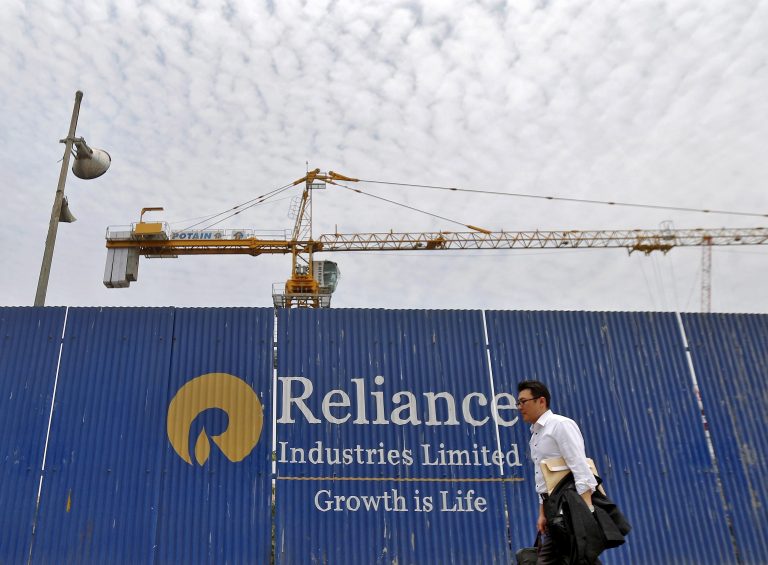KOLKATA: On Monday, Ambani-owned Reliance Industries Limited (RIL) announced that its board would consider a proposal to issue equity shares for its existing shareholders on a rights basis. Today, industry analysts are saying that the approval of this proposal could potentially help the oil-to-retail conglomerate create a significant buffer to cushion the impact that COVID-19 pandemic is having, on businesses.
In a statement to the BSE, RIL stated that the firm’s board will meet on Thursday to consider and approve its March 2020 quarter and FY20 results, recommend dividend on equity shares, and consider a proposal to issue equity shares to existing shareholders on a rights basis, as may be permitted under applicable law, subject to such regulatory/statutory approvals, as may be required.
Now, ETIG calculations are showing that this rights based issuance might make RIL net debt-free by March 2021, even though actual proceeds from recent investments by Saudi Aramco and Facebook are getting delayed. ETIG estimations indicate that RIL could raise ₹41,000 Crore from this issuance if while doing so it dilutes 5% of equity at a 10% discount on the current market price.
Global brokerage Morgan Stanley that a rights issuance with 2% new shares alongside a 5% discount to the current market price would help RIL raise about $2.3 billion (₹17,500 Crore). Their estimates, further, show that RIL could raise about $13.8 billion (₹1,04,000 crore) by issuing 12% of new shares at a discount of 5% to the market price.
RIL’s debt stood at ₹3.06 trillion as of December 2019, compared to ₹2.87 trillion in March 2019. Net debt, as of December 2019, had amounted to ₹1.53 trillion. According to a Credit Suisse note, RIL’s net debt-to-equity ratio, as of March 2020, is expected to be 0.52x.
Morgan Stanley also expects that the rights issue would reduce focus of investors on asset divestments. It estimates the rights issue would be earnings accretive by 0.1-2.6% as it ends up reducing the debt of $41 billion (₹3,11,900 Crore) after the announcement of this Facebook deal.
“We were not expecting a rights issue,” acknowledged an industry analyst. However, he added, “In the current global context and oil markets, the rights issue should be seen as a ‘Plan B’ if there is any delay for the stake sale to Aramco. This is the easiest way to achieve the zero-net debt target.”
Typically, companies with ‘AAA’ equity rating by brokerages raise money from the debt market to meet their cash flow mismatches. RIL’s debt stood at ₹1.53 Lakh Crore, as of December 2019, compared to ₹2.87 trillion in March 2019. Net debt, as of December 2019, had amounted to ₹1.53 trillion. According to a Credit Suisse note, RIL’s net debt-to-equity ratio, as of March 2020, is expected to be 0.52x.
Global Brokerage,Centrum Broking believes RIL could raise ₹16,600-35,600 Crore if equity dilution is between 2.5% and 5%, with each of them priced at 20-25% discount to the current market price.
A 5% equity dilution means every shareholder will get five shares for every 100 they hold. As of December 31st, 2019, a portfolio of foreign investors held 24.51% of RIL stakes, coming only second to the Mukesh Ambani family which held a 50.03% stake while mutual funds and others held the rest.
An anonymous analyst, working for a leading domestic brokerage stated that the consensus fair value of the company’s stock is around ₹1,600-1,700 per share. This means that the rights issue, if priced at a discount of 8-10%, could attract investors’ interest. Shares of Reliance Industries ended flat at ₹1,429.95, on Tuesday, after initially falling in a strong market.
Last year, RIL had announced its plans of becoming net-debt free by March 2021. Additionally, they had announced that it was in talks with Saudi Aramco to sell a 20% stake in oil-to-chemical division for about $15 billion (₹1,14,000 Crore). Now, the sharp drop in global oil prices this year and the demand compression in most global economies due to this pandemic, have analysts raising concerns about the Aramco deal’s timeline of completion.
RIL’s future plans also included a ₹25,21 Crore deal with Brookfield group for the sale of 51% stake in its telecom tower assets, through an investment infrastructure trust (InvIT).
In December 2019, RIL and BP agreed on a joint venture, wherein BP will acquire 49% stake in RIL’s retail fuel business, for ₹7,000 crore.
Just last week, US social media titan, Facebook had announced its plans to invest ₹43,574 Crore ($5.7 billion) in Jio Platforms, a wholly-owned subsidiary of Reliance Industries, for a 9.99% equity stake in RIL, on a full dilution basis.
RIL’s December quarter capital expenditure at ₹14,015 Crore was 75% of its cash profit that stood at ₹ 18,511 Crore, which gives an indication of the surplus cash it has for debt reduction. However, with the regional gross refining margins (GRMs) slumping to multi-year lows, RIL’s projections of free cash-flow from core energy operations might shrink in the upcoming quarters. According to Kodak Institutional Equities, every dollar change in the company’s GRM and every $25/tonne change, in petrochemical realisation, impact RIL’s operating profit by 4%. The consensus of RIL’s 12-month forward earnings per share remains slashed down by 12.7%, at ₹81.65, since the first day of the nationwide lockdown imposed by the government to curb the spread of COVID-19.
So, analysts are reckoning that along with bond issuances, finances raised through a rights issuance might be the only plausible way forward for RIL if it wants to avoid any increase in debts to meet its operating costs.
According to Bloomberg, RIL has prior-commitments to repay debts of ₹36,625 Crore and ₹45,498 Crore for 2020 and 2021 respectively. Along with this Bloomberg consensus predicts that the company is likely to incur capital expenditure of ₹50,161 Crore and ₹47,355 Crore in FY21 and FY22. These costs might prompt the company to raise funds via right issue for the first time in 29 years.

